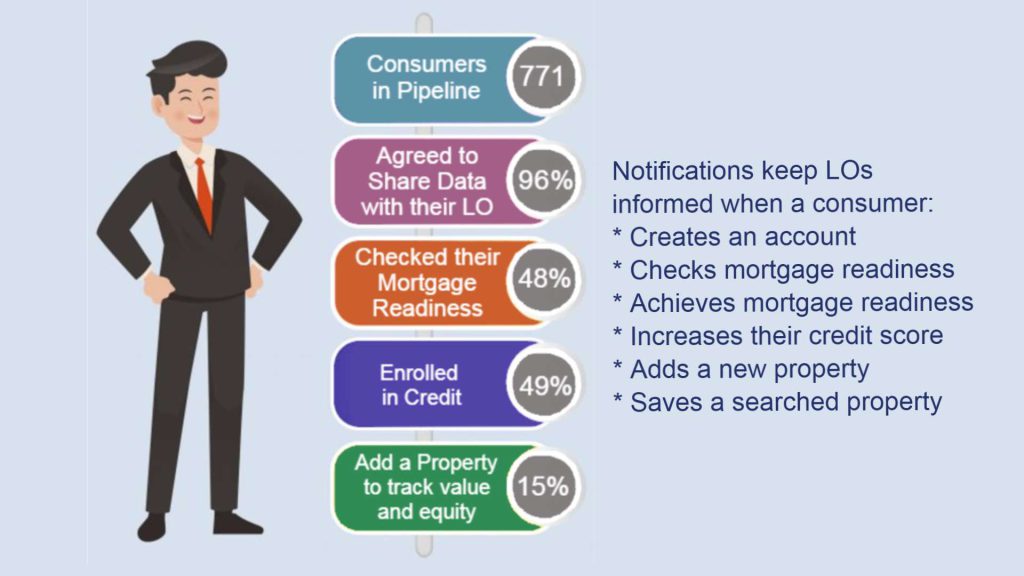Overcome employee resistance to change and accelerate user adoption of new technology solutions with a three-phase adoption plan
70% of digital transformation programs fail due to a lack of employee engagement, inadequate management support, poor or nonexistent cross-functional collaboration, and a lack of accountability.
Allocating enough time, resources, and budget to evaluate, identify, implement and adopt technology solutions to solve a recurring issue or to streamline an existing process is challenging for mortgage lenders, banks, and credit unions. Still, the technology investment will only benefit the company and individual team members if the implementation plan includes strategies to ensure effective adoption.
Over the past few years, loan officers have been overwhelmed, adapting to new ways to attract nervous homebuyers to their business while closing loans with less operational support. Management may have put decisions on hold to integrate new technology, or technology that was implemented may have a low adoption rate due to employees needing more time to attend training sessions and reluctance to start using the new system or process to experience the benefits.
A new year is an ideal time to gain adoption for new solutions and relaunch any technology platform that is not being fully utilized. To help ensure your next technology solution is better adopted, we’re sharing our tried and tested three-phase technology adoption plan.
Overcoming employee resistance to change
For a technology adoption plan to be successful, the plan must also address the common reasons employees often resist adopting new technology.
Employees find it difficult to let go of an old system to adopt a new system.
When employees use the same technology for a while, whether a loan origination system (LOS) or a manual verification process, they’ve adapted their workflow to that system. A new solution, even if it’s better technology and will result in more efficiency, will require them to change their workflow. Even if they may have disliked some features in the old system that they don’t see in the new system or see the new system’s benefits, every company has a subset of employees who resist change. For the new technology solution to be adopted, they will need encouragement to take the extra time to complete tasks using the new system until it becomes as familiar to use as the previous system.
The new adoption plan lacks transition support.
While employees become used to the new system, some tasks may take a little longer to complete. It takes time to use new keyboard shortcuts, identify where information should be added in a new system, or adapt their existing workflow to incorporate new technology.
Management and team supervisors must clearly communicate the transition or implementation plan multiple times in company, department, and branch meetings. The plan must provide a reasonable amount of time for employees to transition and ongoing support for those who may initially struggle to adapt to the new process.
Employees fear new technology will result in job loss.
Mortgage automation may have pulled the industry out of the dark ages over the last ten years, but your employees will want to be reassured that any new technology will not replace their jobs. Loan officers will want to hear the benefits of adopting the new technology to reduce or eliminate mundane tasks to help them to become more efficient, so they have more time to build better relationships and provide personalized customer service. Adopting new fintech that provides a new way to generate leads and nurture new customers in their pipeline will free them to spend more time with mortgage-ready customers so that long-term they will close more business.
Your operations team will want to hear that the new technology will increase efficiency and enable them to process applications faster while reducing the risk of human error inherent in manual tasks.
Creating and processing mortgage applications has inherently been mired in manual paper-based processes. Focusing on the benefits that previously adopted technology has brought to their business, such as a digital mortgage application replacing manually typed applications, or chasing down bank statements to verify assets versus an automated verification process, can help employees understand that adopting new technology will ultimately benefit them, the business and their customers.
A three phase technology training program to increase user adoption
Phase 1 – Create a pilot group
The champions who advocated for the new technology should clearly define how the technology will address specific pain points, create efficiencies, and benefit loan officers, consumers, operations, and the company overall. Reframe the initial decision within the current market conditions if relaunching a platform.
The project manager should work with the marketing and human resources departments to identify how to message the benefits to each audience. Marketing can craft external messaging to consumers, business partners, and loan officer recruiting. Human resources can support internal messaging to branch managers, loan officers, and operations teams.
Each rollout should start by identifying a group of internal tech-savvy advocates who are prepared to commit to the training, provide feedback during the pilot phase, and champion the platform for the enterprise rollout. Rolling out new solutions or processes in small pilots will enable the group to learn how to use the product directly from the vendor and optimize how the platform will be leveraged operationally by the company or department.
Phase 2 – Identify Subject Matter Experts
If the new platform or technology is intended to be rolled out company-wide, for example, a new LOS used by loan officers and operations, the train-the-trainer model can be more cost-effective than expertly training all employees. An added benefit is that this training process distributes subject matter experts (SMEs) throughout the organization. For example, one person in each branch or regional operations team receives additional training from the vendor to become the first person the branch or team contacts for assistance. They will also be responsible for training new hires after the official rollout and can be used to update their time with straightforward product updates.
Phase 3 – Train the remaining users
When the champions and SMEs have been trained and using the platform regularly, gather their testimonials advocating how the platform benefited their business, improved their process, reduced time to close, etc., to inspire the remaining team members to attend training.
People learn differently, so it’s essential to provide various types of training to roll out each solution, including:
- In-person training is suitable for up to 25 people in one session, combining a burst of formal training followed by hands-on tasks to reinforce the training. Allow time for questions and provide individual attention to those that need it.
- Online training is ideal for departments or individuals working remotely, but it can still follow a similar agenda to in-person training.
- Record the online training presentation for later reference by everyone being trained.
- Written and visual cheat sheet instructions for everyday tasks provide a handy reference for all platform users.
If the new technology is replacing an existing system, such as a LOS or CRM, it’s best to determine a cross-over period for stragglers to get trained and adopt. A firm deadline to cut over to the new system must be specified in advance and reinforced by executives and department leadership.
For optional technology platforms, consider providing incentives for completing the training and adopting the system. Assign weekly or monthly tasks to get users familiar with different sections of the platform. For example, incentivize team members to add ten new consumers every week for eight weeks in your company’s new CRM or financial fitness app. Monitor usage analytics to identify adoption and training gaps and to identify wins to celebrate.
The decision to onboard new technology is never made lightly, especially in the budget-conscious times we find ourselves. Taking the time to create an adoption plan that proactively addresses potential employee concerns and provides sufficient training resources to increase user adoption will help ensure the business benefits from the investment.



